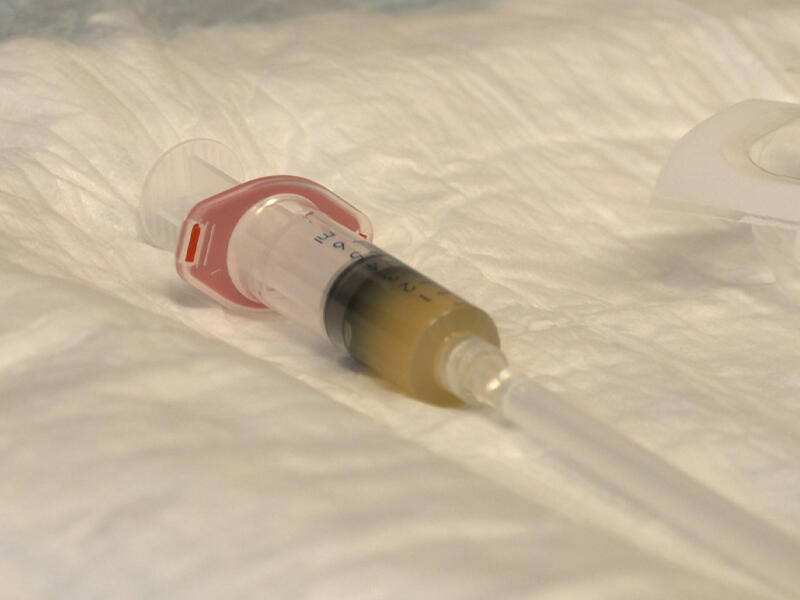In the past few years, you may have heard the terms “orthobiologics” or “regenerative medicine” being thrown around with a bit more regularity.
But, what actually are they? If you ask Tiffany Facile, the clinical director of regenerative medicine at Sanford Health, it’s as simple as fighting injuries with one’s own resources.
Keeping it natural
Facile said this less invasive treatment can be an alternative to surgery. Orthobiologics may decrease the need for pain medication, accelerate healing, and improve recovery, according to Facile.
But, in order to understand orthobiologics, Facile said one also needs to understand regenerative medicine as a whole.
“Orthobiologics is a part of regenerative medicine, which uses natural substances, or biologics, from one’s own body as an attempt to treat musculoskeletal injuries, tendon injuries, muscle injuries, (and) osteoarthritis,” said Facile.
“Regenerative medicine is an area of medicine that utilizes cells to treat, repair, or regrow organ tissues. While it’s not understood what these cells are doing, it’s believed that they are repairing and decreasing inflammation, which can then improve the repair process in a particular injury,” she explained.
So, what are the differences?
Donella Herman, M.D. is a sports medicine specialist at Sanford Orthopedics and Sports Medicine in Sioux Falls, South Dakota.
She said orthobiologics could be considered narrow, as opposed to the broad scope of regenerative medicine.
“In orthobiologics, we focus on using platelet rich plasma and therapeutic cells.
“For regenerative medicine, they’re doing things like growing cells, utilizing other people’s cells to fight cancer. It’s a broader term, and a broader thing,” said Dr. Herman.
She, Facile, and others on the team at Sanford have narrowed their therapies to specifically platelet rich plasma and therapeutic cells, in an attempt to treat musculoskeletal injuries.
Dr. Herman said the cells they use are derived from either bone or adipose tissue. Meaning, they use cells from a patient’s bone, or an area on their body with more fat. Those areas are rich in regenerative cells, including stem cells.
Breaking the stigma
For some of you reading this, you may have thought, “OK, this seems really great.”

Photo by Simon Floss
Then, we said the polarizing words: stem cells.
We get it. There’s a stigma.
But, why is there one? If you ask Dr. Herman, it’s because of “the snake oil salesman who is just trying to get rich and leave town.”
“We’ve had these pop-up shops all over the country. People promising the moon with these therapies and saying it’s going to do all these amazing things. You don’t have to go far into the internet to have someone tell you that stem cells or platelets will fix everything.
“I joke that if I believed all the hype, I’d put it on my breakfast cereal. But, the problem is that there’s these people who are out there hyping it up only for profits,” said Dr. Herman.
Stem cells: Sanford tests first umbilical stem cell treatment for COVID-19
And, since the beginning, Sanford Health has explored this treatment option for one reason, and one reason only: giving any patient any available option.
Not for profits.
“There’s a lot of people that don’t have your best interest in mind who are performing these procedures. We’re testing to make sure there’s no bacterial contamination, making sure there’s no signs of infection, and we’re testing the cells to make sure they’re viable.
“I think that’s what makes Sanford stand out. We have rigorous safety measures that we’re using, because the FDA is watching us. We’re the only people who the FDA has approved to watch for this,” she said.
Who could benefit from orthobiologics?
Facile says this is one of the most challenging parts of orthobiologics, because there’s still so much to learn.
“The potential is there for many musculoskeletal conditions, but we lack high quality studies to guide our decision making. Because of this, one needs to speak with a trained care provider like Dr. Herman,” said Facile.
“That’s ultimately a provider and patient’s decision to determine benefits, through shared decision-making, education and information.
“We cannot replace surgical interventions. This is an offering for those that may not want surgery, or may not qualify for surgery to give them an opportunity to get their quality of life back.”
Learn more
- Sanford Health pioneers use of body’s own stem cells
- Sports medicine: Your key to a healthy, active lifestyle
- NFL Alumni tour Sanford Health for partnership talks
…
Posted In Innovations, Orthopedics, Sioux Falls, Specialty Care, Sports Medicine
